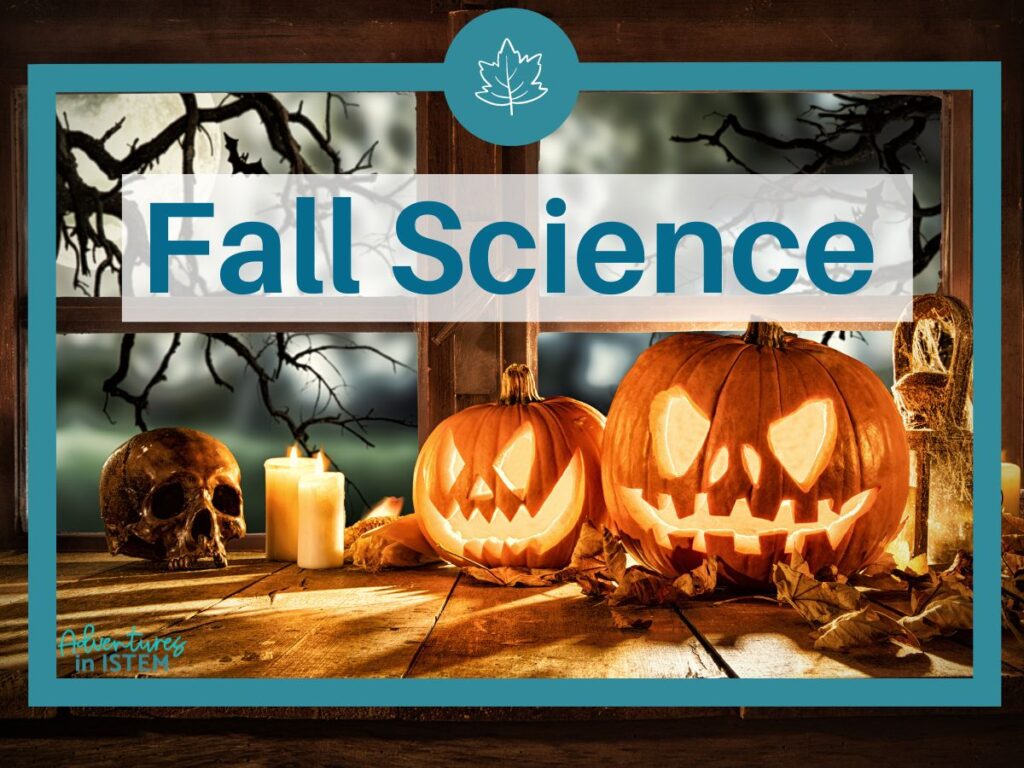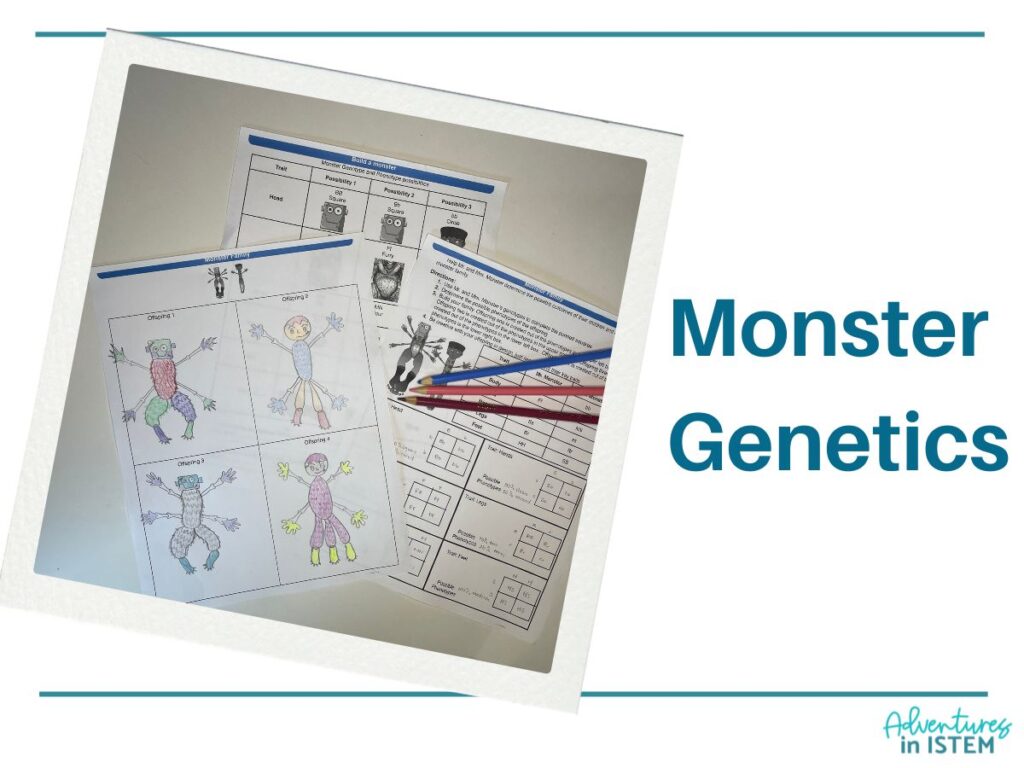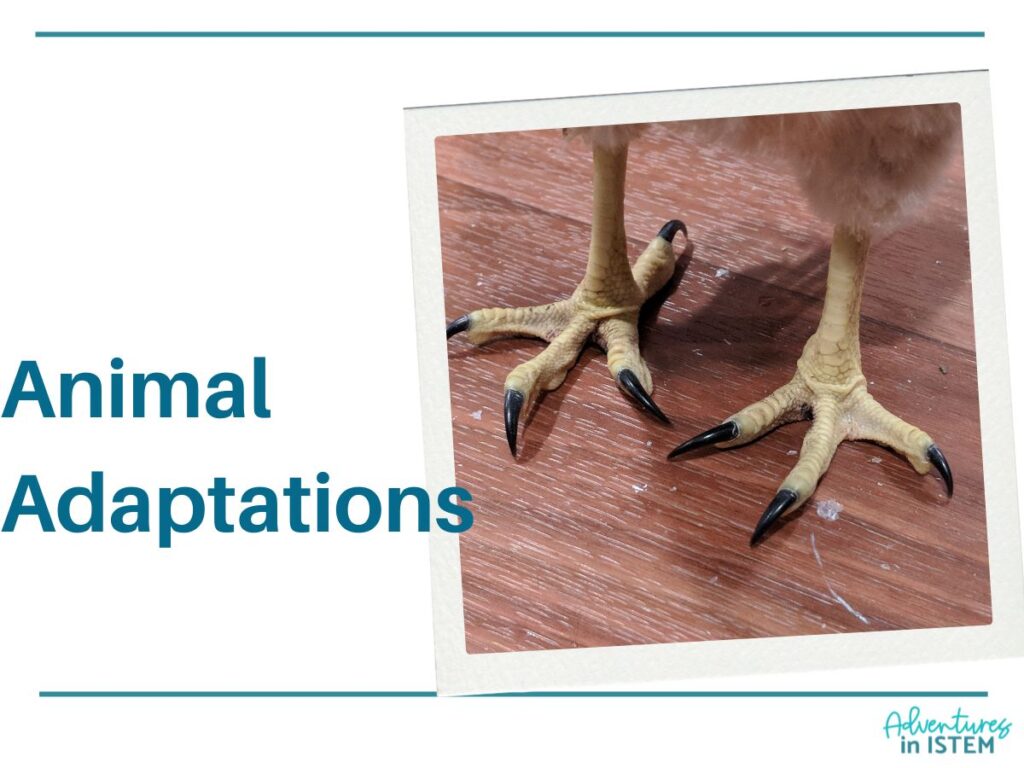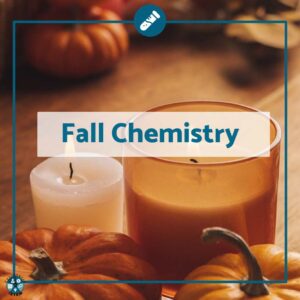The leaves are starting to change color and that means it’s time for my favorite season, fall, and my favorite holiday, Halloween. If you’re looking to sprinkle a little seasonal magic into your lessons, I’ve got five Halloween science projects that are just right for fall.

#1: Pumpkin chunkin' with catapults
One of my all-time favorite Halloween science projects is “Pumpkin Chunkin’ with Catapults.” It’s a fun way to explore physics with your students. My students have to think as engineers as they learn about catapults, do an online simulation, and then build their own catapult device. Their challenge to to be able to lauch pumpkins (marshmallows) and knock over a tower of cups.

Basic Idea of How It Works:
- Guide your students through the engineering design process using popsicle sticks, rubber bands, and spoons or materials of their choice to construct their catapults.
- Once they’re built, it’s time for the fun part—launching the pumpkins and seeing how far they fly and how many stacked cups they knock down.
- Have your students measure the distance each pumpkin travels and record the data.
- Wrap it up with a discussion on how different designs and modifications—like changing the angle or tension—impacted the results.
To complete the full engineering design process you will want to challenge your students to make adjustments to their catapult to improve it. Maybe they increase the tension in the rubber bands or tweak the angle of the spoon. I always tell my students, there’s always room for improvement.
#2. Pumpkin Boat Races
Another fun Halloween science project that can be done anytime during the fall season is “Pumpkin Boat Races”. This is a modified activity based on traditional pumpkin races</font color> that take place all over the country. For this activity students hollow out small pumpkins and carve them into boats. From there they have two challenges. In challenge 1, we see which boat can hold the most weight before sinking. In challenge 2, they have to use Newton’s 3rd law to make their boat glide on the water and we have a boat race.
Basic Idea of How It Works:
- First, students need to hallow out their pumpkins and carve them into boats. It's best to have them do this at home with a parent supervision so the mess stays at home and not in your classroom.
- For the buoyancy test, you can use marbles, coins, washers, or other heavy objects to see how many they can hold
- For the Newton's scooter part, you could have students work in groups with the pumpkins that were the best in the buoyancy test to make them move. Many students use balloons for this part
- If your school has a pool this is perfect for the boat race, or get a cheap blow up kid pool for it to see who reaches the other end the fastest without sinking.
To complete the full engineering design process you will want to challenge your students to make adjustments to their catap to improve it. Maybe they increase the tension in the rubber bands or tweak the angle of the spoon. I always tell my students, there’s always room for improvement.
#3: monster genetics
Another class favorite is “Monster Genetics</font color>” with Punnett squares. If you teach genetics during this time then you will really want to do these fall science activities. In activity one we use punnett squares to create a monster family. Students have to fill in the punnett squares using the genotypes of the monster parents and then create their four monster offspring based on the results. In the second activity students flip coins to determine allele combinations for the jack-o-lantern offspring. They then draw what their jack-o-lantern looks like based on the genotype and phenotype results.

Basic Idea of How It Works:
- Start with a quick review about genetics including genotypes, phenotypes, and punnett squares
- Use the parents genotypes to fill in the punnett squares and then draw the resulting monster offspring
- Use coins to determine the genotype and phenotype of your jack-o-lantern and then draw your jack-o-lantern offspring
- To extent the pumpkin activity you could have students join together and cross their pumpkins to make a jack-o-lantern family
One thing I like to do to add more fun to this activity is have my students decorate cookies in the forms of their jack-o-lanterns. For many of my students it is the first time they have decorated cookies so its an experience they always remember.
#4. Building a skeleton hand
Basic Idea of How It Works:
- Start with a discussion on the anatomy of the human hand, focusing on bones, joints, and tendons.
- Then have students trace their hand onto cardstock or cardboard and cut out the shape.
- Students will then cut and attach straws to represent the bones.
- Then, they will thread string through the straws to act as tendons.
- When students pull on the strings, the fingers should move, simulating how tendons work in the human hand.
You can extend this activity by having students research common hand injuries or conditions like carpal tunnel syndrome. They can present how these conditions affect hand movement and discuss why understanding hand anatomy is important in fields like medicine and robotics.
#5. Animal Adaptations in Fall

Basic Idea of How It Works:
- Start with a discussion on how different animals adapt to the fall season, focusing on behaviors like hibernation, migration, or physical changes like camouflage.
- Assign each student a specific animal to research and discover how it prepares for winter or have them choose an animal to let them have more ownership of the project.
- Students can create a poster, drawing, or model that showcases their chosen animal and its fall adaptations.
- Have students present their projects to the class, explaining how their animal survives the seasonal changes.
To extend the project you can have students compare and contrast their animal to other animals in a similar biome or ecosystem.
These five Halloween science projects are great for fall science activities because they’re hands-on, engaging, and they help reinforce key concepts. If you try one out I would love to hear how it goes.
If you’re looking for more ideas, be sure to check out related fall science activities on Adventures in iSTEM.





